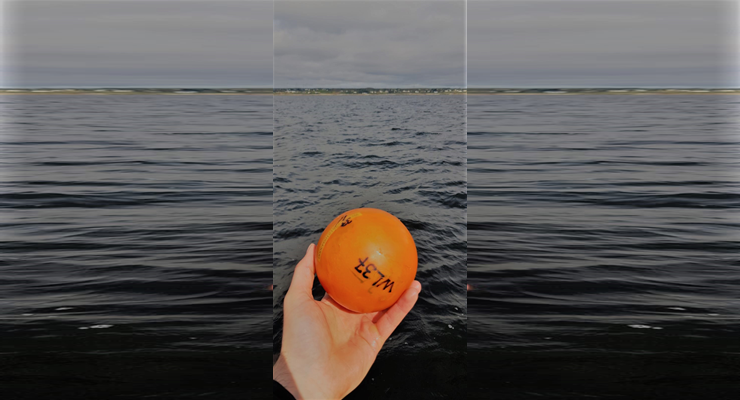 |
|
The WAVY Litoral is one of the surface drifters from the WAVY family designed to collect marine data on coastal zones. This small-sized surface drifter is about 12cm in diameter and weighs close to 750 g. The WAVY is equipped with an IMU (MEMS) sensor to collect critical wave parameters such as linear and rotational accelerations caused by passing waves. This enables the computation of wave characteristics and spectra.
The WAVY Littoral also contains a GNSS receiver and a GPRS radio for accurate data collection at a precise location, with real-time data transmission to shore. The drifter is designed to lie low in the water so as to minimize the “wind-sail” effect and thus become more accurate in the observation of near-surface currents.
Several operational test activities with the WAVY Littoral have already taken place in the Portuguese coast throughout this summer. The WAVY was used to collect current and wave data at the Guincho, Seixal, and São João da Talha beaches. These Test Campaigns allowed for the verification and validation of the WAVY data acquisition and processing methods.
MELOA covers some use-cases for the WAVY Littoral. These Use Cases are typical applications in which the capabilities of the drifter can be extremely useful. Have a look below! |
Wavy Littoral Use Cases
► Wave and Lagrangian current measurements in nearshore areas The WAVY Littoral allows the estimation of wave parameters including height, period, and direction. These data can be used to construct a set of wave parameters fields, from which a map of isobaths may be derived. The WAVY Littoral can also be used to test and improve different procedures to characterize the wavefield in the nearshore area. In parallel, the displacement of the drifter over time gives a direct measurement of the surface currents. During MELOA project, our partners Instituto Hidrográfico (IH), Smartbay Ireland (SBI) and Universitat Politècnica de Catalunya (UPC) will test this use case in the Portuguese, Irish and Spanish coasts.
► Safety at Public Beaches: Demonstrations of the nearshore circulation, with emphasis on rip currents The WAVY Littoral can be used to depict the wave-induced nearshore current system to the general public, by involving them in practical observations of the rip currents in the beach. By doing so, it is possible to raise the awareness of bathers, helping them to recognize, avoid and leave rip currents safely. MELOA already validated this use case with a WAVY prototype in June of 2018, at the Portuguese Coast, with the participation of ISN (Instituto de Socorros a Náufragos), the Lifeguard Unit of the Portuguese Maritime Authority. Read more here: WAVY Test Campaign in the Portuguese Coast. Similar activities with the WAVY Littoral will also be prepared for the Irish and Spanish beaches an adapted to local conditions. In Ireland, a demonstration of the drifter is being prepared in Galway, in the Corrib river; this river flows through the city with currents of considerable strength and volume, thus being a threat to anyone that could accidentally fall in the water. The Irish Water Safety organization is partnering with MELOA to develop a demonstration of the flow in the river; the Marine Institute will use the data acquired in the demonstration to validate and fine-tune their hydrodynamic circulation models of Galway Bay, to which the Corrib is a major contributor.
► Citizen Science: involving the public in the data collection and characterization of dynamic features of wide concern Among the several activities that we are conducting, MELOA wants to involve the citizens in data collection, since we believe that citizen science can be a powerful tool to get meaningful marine data for research. To stimulate Citizen Science, MELOA will invite schools, science culture centers, sailing clubs, environmental organizations, among others, to participate in our Test Campaigns and develop their own experiments with the WAVYs. The open calls for participation will be promoted on MELOA’s website and social media. Read more here: MELOA: promoting Citizen Science to get meaningful marine data. |